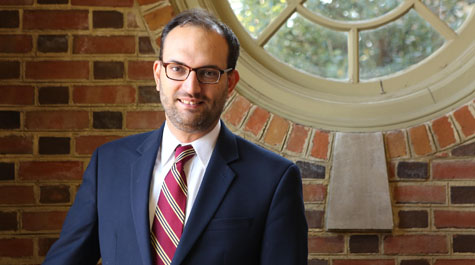Q&A: W&M’s Joe Dobrota on financial aid
After Edward Irish retired from William & Mary after 30 years of service, Joe Dobrota became William & Mary’s financial aid director during the 2016-17 academic year. He brings with him 21 years of experience in the financial aid sector. Previously, he was director of student financial assistance at the Catholic University of America and director of central financial aid at Regent University. W&M News recently caught up with Dobrota to see what’s new in financial aid.
Q: How much does financial aid differ from year to year? What are the depending factors for financial aid awards?
A: Financial aid at W&M is based on financial need. So, as long as a family’s financial situation remains relatively constant across the student’s time at W&M, the family can expect somewhere around the same costs each year.
The desire to keep costs as constant as possible starts with W&M’s commitment to keep an in-state student’s tuition rate the same across their four years of enrollment (The W&M Promise) and is enhanced by our packaging philosophy to meet a similar percent of financial need each year. However, because families’ situations fluctuate over time, we may not be able to offer the same aid package each year. For example, if a family’s financial situation changes because of a job loss or an additional student in college, their eligibility for financial aid may increase. Alternatively, should a family’s earnings or assets improve or a sibling stops attending college, the family’s financial need may decrease.
Regardless of the shifts in family financial situation, our goal is to ensure we treat all applicants equitably and consistently.
Q: Is there anything new that the financial aid office will be adding for the 2018-19 aid cycle?
A: In terms of financial aid programs or offerings, there really isn’t anything new being added for the 2018-19 academic year. However, like many offices we are looking forward to the impact of W&M’s For the Bold campaign in coming years. The single largest part of the fundraising campaign is targeted for student scholarships.
The only other change in terms of available programs is that the Federal Perkins Loan program expired as of Oct. 1 and will no longer be available in future years. The program expired a few years ago, but Congress then passed legislation to revive it for a few more years. We’ll keep our eyes on Washington to see if they take similar action. One thing I’ve come to expect in my 21 years working in student financial aid is that things can change quickly.
Q: How can students and families make the financial aid process easier? What are some simple tips and tricks?
A: The number one thing students and families can do is to ensure they complete the required applications by the suggested deadlines and with accurate information.
The financial aid community is excited to see the return of the IRS Data Retrieval Tool (DRT) on the FAFSA for the 2018-19 academic year. Using the DRT ensures accurate data from the IRS is used on the FAFSA and lowers the chance that a student might be selected for the verification process. That’s a win-win for both families and our office. There were issues with the DRT option last year that led to the U.S. Department of Education shutting it down during one of the busiest times of the processing cycle. However, they have reengineered the process and it will be available for the 2018-19 academic year.
Speaking of next year, the 2018-19 FAFSA is already open. Since it uses information from the already completed 2016 tax year, there’s no reason to delay submitting it early.
Q: What can students and families expect in the future for financial aid? What changes can be expected?
A: It’s been an interesting first year working at William & Mary. I’ve been able to assess our strengths and weaknesses over that time, and we’ve compiled a list of lots of things we will be working to improve.
Many of these are behind-the-scenes processes, but many of them students and families will be able to notice. For example, we are working to enhance the information available to students through the self-service pages in Banner (where students see their required documents and award packages listed), we’re in the midst of researching improvements to the methods students can use to submit documentation to the office, and have opened discussions with Dean of Students office about how to increase the visibility of Federal Work Study job opportunities for students. Skip to main content
Skip to main content

